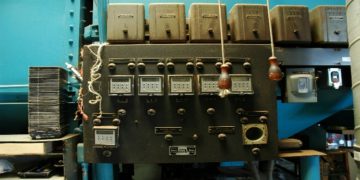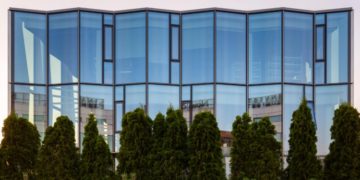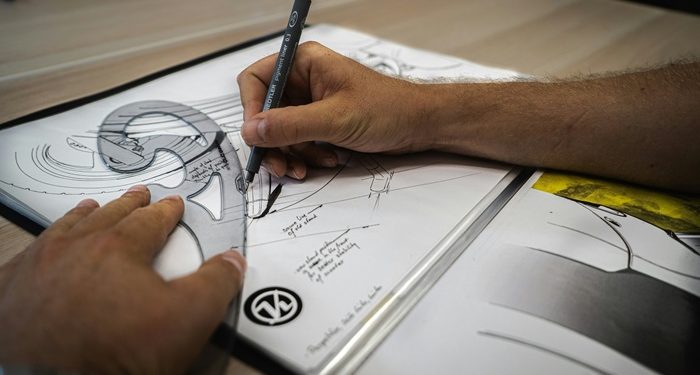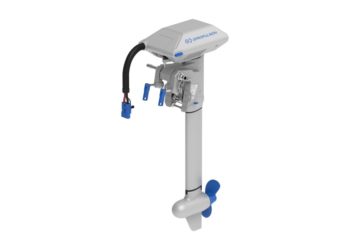Future architecture is already upon us—and it’s intelligent. Intelligent buildings, the height of sci-fi fantasy of old, are now dictating the standard for how we work, live, and interact with space. As humans talk about smart buildings primarily in terms of automation, energy efficiency, and artificial intelligence integration, there’s another aspect that’s working quietly but deeply to bring this revolution about: industrial design. Right at the heart of this transition is the unassuming railing.
Yes—railings. Such vilified structural elements are no longer merely about safety and use. Nowadays, in contemporary architecture, railings are increasingly becoming statements of fashion, technology integration points, and narrative devices that reflect the building’s overall intelligence and purpose.
The Role of Architecture in Shaping Intelligent Spaces
Smart buildings aren’t just sensor-filled—they’re holistically designed environments in which every element, from lighting to handrails, is part of a streamlined, integrated experience. Architects and engineers are now being called upon to think about more than the digital. It’s not just a question of introducing smart tech; it’s a question of creating design continuity between the physical and the digital.
That’s leading to a redesign of a building’s industrial elements—its stairs, barriers, rails, even trim—with an eye toward tech sophistication. These elements must still deliver durability and usefulness, but now they’re also meant to play a visual and symbolic role in assisting the building in expressing innovation.
The New Face of Industrial Design
Railings used to be a purely functional item: built to order, installed for safety, and commonly overlooked in design discussions. Today, designers are tackling railings as an integral part of architectural design, incorporating them into larger aesthetic ideas and technology implementations. Glossy stainless steel finishes, bold powder-coated hues, and geometric or custom-cut profiles are being utilized to reflect the cutting-edge of the smart systems in the building.
More intriguing, though, is the manner in which material science is also evolving in tandem with smart architecture. Railings, for example, are being made from materials that are increasingly chosen for their compatibility with a building’s green goals, their ability to reflect light for energy conservation, or their capacity to withstand conditions favoring sensitive equipment.
Integration with Smart Technology
How is it to utilize a railing as something other than an impediment? In cutting-edge buildings, architects are installing LED light strips into handrails to support adaptive lighting systems. Others include motion sensors that turn on lights or control temperatures in accordance with the number of individuals in the vicinity. In major commercial buildings, handrails even function as conduits for concealed wiring or structural reinforcement for displays and interactive panels.
As buildings become increasingly interactive and information-rich, there is potential for railings to incorporate intelligent functions embedded within, for example, real-time environment sensors or safety functions such as vibration notifications in busy areas. Such applications not only contribute to user experience but also to accessibility and building management.
When Form Follows Function—and Then Evolves
The balance of form and function is not new to architecture, but the manner in which industrial design is being elevated to the level of smart systems aesthetics is new. Instead of hiding industrial detail behind drywall or disguising it in beige, architects are highlighting them. That means showy staircase railings mimicking digital signage, or sculptural balcony guards that echo the angular patterns of rooftop solar panels.
This is where metal designs from manufacturers who understand the demands of modern architecture come into play. Companies like Sihandrails specialize in creating industrial elements that speak the language of smart design—combining precision engineering with aesthetics that elevate the entire structure. Whether it’s custom handrails, modular systems, or sleek guardrails, the best designs are now tailored to match the ambition of today’s most innovative buildings.
The Urban Landscape Is Changing—So Is the Craft
As cities are increasingly networks of smart grids and interlinked systems, the demand for smarter buildings is revolutionizing how structures are created. Developers and cities are investing in structures that are not just reactive but also predictive. And that’s leading the built environment—from skyscrapers to office parks—to be reengineered from the inside out.
Here, even a minor design choice such as the shape of a balcony railing is important. With the correct design, it is possible to minimize glare, aid in sustainable material usage, or enhance the building’s overall brand image. A crisp, architectural handrail can shout “tech-forward” just as much as any touchscreen in the lobby.
Accessibility, Safety, and Experience—Reimagined
Smart isn’t the only thing about new buildings anymore—they’re also accessible. Railings, as a fundamental accessibility feature, are one of the most important points of contact in user experience. With newly developed materials and design strategies, one can create railings that accommodate differently-abled users while still fulfilling aesthetic objectives.
For example, textured surfaces can guide visually impaired individuals through complex building arrangements. Contoured handrails can reduce physical exhaustion. And frictionless transition between stair rail and ramp rail improves mobility while seeming more unified and elegant.
As buildings accumulate and aggregate user data, the feedback of interacting with those design elements can improve architects’ subsequent projects’ accessibility decisions.
Aesthetic Consistency in a Digital World
One of the distinguishing features of great design—is either physical or virtual. A building that prides itself on its smooth, intuitive interfaces must carry that sensation through to its materials. A fractured, old-fashioned railing disrupts the visual rhythm. A sleek, modern one affirms it.
That’s why the dialogue between technology companies and industrial design groups is picking up. Both being aware that they are working towards the same goal—harmonized environments where human beings can feel safe, encouraged, and engaged—railings, along with other structural components, are receiving more attention, investment, and intent than ever before.
Conclusion: The Future Is in the Details
With architecture more and more dependent on technology, naturally, nothing can be an afterthought—not even the railings. One of the things that is so attractive about smart design is that it unifies all the pieces into one user experience. From opening doors to climbing the stairs, the design choices influence how comfortable we are, how we feel when we walk in, and even how safe we are.
Railings are not static metalwork anymore—now they are dynamic players in the life of a building. They signify the transformation of purpose and of aesthetics. And in an age where technology and design converge, the best railings are those that perform more than just hold up. They tell a story.









































































